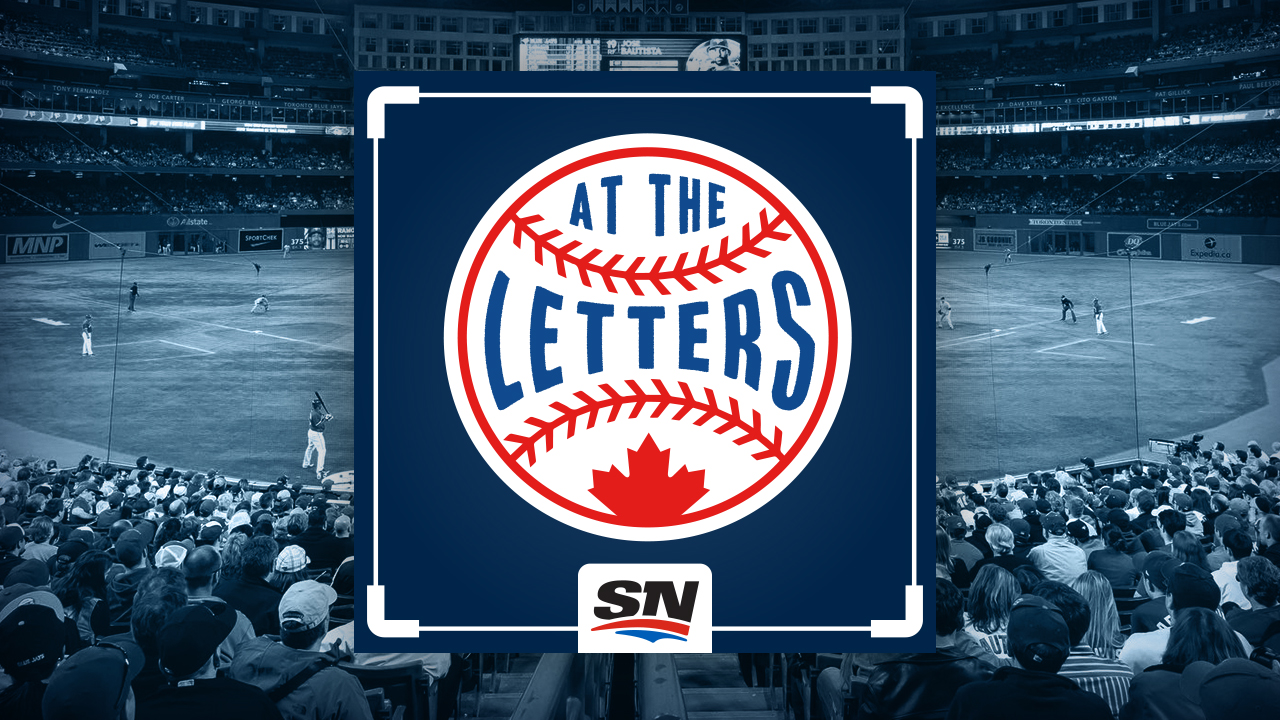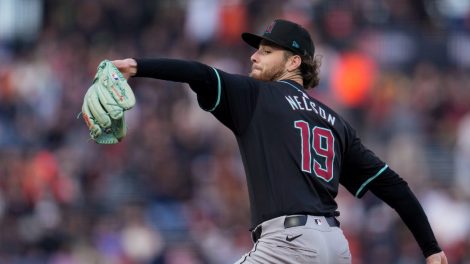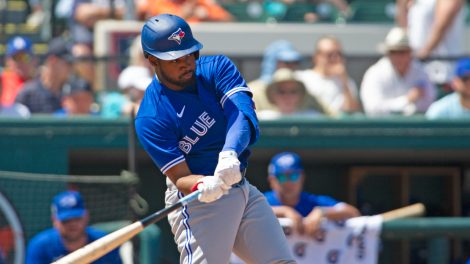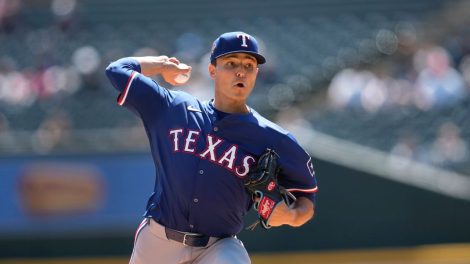When more than 1,000 players appear at the MLB level every year, keeping track of big-league rosters can be a challenge for even the most serious baseball fans. Following the sport at the high school and college levels, too? Unrealistic for anyone but obsessed fans and scouts employed by MLB teams.
That’s where writers like Jim Callis come in. Callis is the executive editor of Baseball America, the leading publication focused on minor-league baseball and the draft, and he reports on the draft for months at a time each year.
—
 Programming alert: Catch coverage of the MLB Draft on Sportsnet ONE at 7 p.m. Thursday | TV schedule
Programming alert: Catch coverage of the MLB Draft on Sportsnet ONE at 7 p.m. Thursday | TV schedule
—
He says the 2013 draft class isn’t anything special; there’s apparently no Bryce Harper to be found in this group. Even so, every draft inevitably produces a number of star-calibre players.
Callis expects the Toronto Blue Jays to end up selecting one of two outfielders now starring at Georgia high schools: Clint Frazier and Austin Meadows. The Blue Jays select 10th overall, early enough to get “a really good player.”
Don’t expect general manager Alex Anthopoulos to play it safe, either. The Blue Jays are expected to continue prioritizing upside over certainty.
Here are highlights from a recent conversation with Callis, who discussed the top players in the draft, and which ones might end up with the Blue Jays:
On the Blue Jays’ draft philosophy:
“I think the Blue Jays are going to continue to be aggressive and go after high-ceiling guys. This isn’t the Moneyball days of J.P. Ricciardi where they want a college performer with good stats. They’ll roll the dice. They’ll take on more risk to get more upside.
Last year they were very fortunate in that they had a bunch of extra picks which they don’t this year. Last year they could move money around since they had a bunch of extra picks. This year they don’t have extra picks so it’s going to be difficult.”
On Kohl Stewart, one option for the Blue Jays with the 10th overall pick:
“I think the two guys that they’d most like to get in terms of that high ceiling guy — and we’re assuming [Jonathan] Gray and [Mark] Appel and Kris Bryant have no chance to get to them.
There’s Kohl Stewart, a high school right-hander from the Houston area, and also a Texas A&M quarterback recruit. He’ll have some leverage but at the same time I don’t think anyone has a number on him yet, what it might cost to sign him, and he’s got leverage, so I’m sure he’s thrown around a giant number.
The other side of that is Heisman winner Johnny Manziel might be there for a couple of years. I don’t think Kohl Stewart’s going to go there and sit on the bench and I think he’s going to go in the top ten picks. So even if he throws out a crazy number and he’s taken high enough he could be offered $3.5-4 million to sign.
I don’t think the Jays are going to get him. I think that’s the Twins’ guy. The Twins pick four and I think that’s the Twins’ guy. And I think if the Twins don’t take him I think Boston really wants him. I don’t really think there’s any way he gets to them.”
On the two elite high school outfielders who could end up going to the Blue Jays with the 10th overall pick:
“Another guy who I think is on the top of their prep list where there’s at least a slim chance he gets to them is Clint Frazier, an outfielder from Georgia near Austin Meadows [another top draft prospect].
Those two guys are an interesting compare too. The two best high school position guys in the draft. Frazier has the best bat speed in the draft. He’s probably more likely than Meadows to have to move from centre field to a corner. But if he does he’s got more power, he’s got the arm strength. He’s not the biggest guy, but he can really juice the ball. His bat speed is electric.
Frazier had a better spring — they played head to head and Frazier hit two home runs in a game when everyone was there to see them both. Meadows didn’t have a bad spring, but Frazier captivated people a little more.
Meadows is probably a better hitter for average, he’s faster, he has a better chance of playing centre, he’s more of that potential five-tool centre fielder.
I do think the Jays like Frazier more than Meadows a little bit. Not by a landslide, but I do think they like him more than Meadows by a little bit, and it’s hard to say where he’s going to go. If Kohl Stewart goes to the Twins then I think the Red Sox are going to pick between those two outfielders. And I think ultimately the Jays will get the other one.
I think the Royals are going to take a pitcher and I think the Pirates will take a high school catcher.”
On other options for the Blue Jays’ top pick:
“If Frazier’s gone then I think the guy that they’re looking at would be Meadows. I think they’d also look at Trey Ball, the high school left-hander from Indiana who right now I have going number eight.
I think they’d look at McGuire a bit — Reese McGuire from Washington who I have going number nine to the Pirates.
I also think that the California high school shortstop J.P. Crawford, the best shortstop in the draft by a good margin, would be the other guy.
I do think it’s Stewart and Frazier — I don’t know if they prefer Stewart to Frazier or Frazier to Stewart — but I don’t think they have a good shot at Stewart. I think it’s going to be one of the two Georgia high school outfielders [Frazier or Meadows].
Maybe someone drops in their lap. I don’t see Kohl Stewart getting to them, and I don’t see anyone better than Frazier getting to them.
I think they’re going to get a really good player. I think it’s going to be one of those high school outfielders and coming into the year those were the two best high school players in the country — and they still are. They’re going to get a pretty good guy.”
Top Blue Jays first round picks by career wins above replacement (source: Baseball-Reference.com):
On draft eligible Canadian prospects:
“I think [Tyler] O’Neill is the best one, clearly. I think he’s a second rounder to be honest. He’s kind of billed a little bit as a Brett Lawrie-lite. Brett was a catcher at his age. Tyler can really hit. I do think he’s a guy [who matters].
You have [Cal] Quantrill who’s interesting and who has the big league bloodlines which teams do look at. It’ll be interesting to see how signable he is. He’s a Stanford commit and I don’t have a read on his signability. A Stanford commit who goes in the third round, a lot of times those guys go to school. If that was my kid he’d be going to school.
I think [Malik] Collymore is probably the next-best guy, an athletic middle infield type. I think those are probably the top three.”
On the relative strength of the 2013 draft class:
“At Baseball America we love to rate everything and if you broke out the 20-80 scale — the scouting scale — this year would probably be a 40 or a 45. Below average, kind of similar to last year.
With that said there’s always talent in every baseball draft. In the fifth round there will be some All-Star. You might not know he’s going to be an All-Star, but there’ll be some good player, there’ll be a good player in the 10th round and there will be a good player in the 15th round.
The overall talent’s down, but there’s still value to be had throughout the draft. I think two of the biggest strengths of the draft are probably high school catching and — I think the biggest upgrade from last year to this year — is last year it didn’t seem like we had many left-handed pitchers at all and this year there’s a lot of lefties on the high school and the college side, so that’s a strength of this draft.
Overall scouts wish there was more talent but then again scouts always wish there was more talent.”
On whether college right-handers Mark Appel and Jonathan Gray are likely to be selected with the first two picks of the draft:
“You never know. And now that you have the new draft rules that came in last year with the assigned pick values and harsh penalties if you spend more than you’re supposed to.
Things can change. It’s the hot rumour right now that the Astros are going to cross everybody up. Some people have Kris Bryant on the same tier as Appel and Gray but instead of taking any of those guys the Astros might go and take Colin Moran the North Carolina third baseman at number one. That was buzzing around a little bit last week, too.
I don’t really think that’s the case. I think [Moran] is in the mix but I think he’s fourth on their list.
I think what it comes down to is the Astros will take Jonathan Gray or Mark Appel. I don’t think they’ve made up their mind which, but if I had to bet today I think they’ll take one of those two and I think the Cubs will take the other guy at number two even though they’re looking at the same guy the Astros are looking at.”
On how Appel and Gray project at the MLB level:
“I guess the line’s a little blurred between a number one starter and a number two starter. If you go under the classic definition of what a number one starter is I just don’t think there are many of them. I call them frontline starting pitchers — guys who would fit at the front of the rotation in the one or two spot — these are both those types of guys.
It’s an interesting compare and contrast. I think in terms of track record Appel’s been doing this longer, he has a track record of success. Gray was throwing 94 in high school, but he wasn’t polished or in peak physical condition. It’s taken him longer to blossom. He’s really exploded this year at Oklahoma.
I think in terms of stuff, I do think Gray’s stuff’s a bit more explosive than Appel’s. I think his fastball’s harder and heavier and I think his slider’s sharper and more devastating when it’s on.
I think Appel’s got a better third pitch and he’s got more polish still. I think he commands his stuff a little better. I think he more consistently pitches in the upper range of what his stuff can be. I think he can get to the big leagues a little quicker, not that that really matters to the Astros at this point.
It’s a matter of what you want. Simplified I’d say you have more comfort with what you’ve got in Appel and I think Gray offers a little bit more upside and a little bit more risk.”
List of Blue Jays first round picks never to make MLB (counting picks before 2007, source: Baseball-Reference.com):
On leverage that teams and players have under the new collective bargaining agreement:
“I don’t think that players have less leverage. In the last CBA before this one MLB strengthened the compensation you get for not signing a player and they also put in a signing deadline for the first time. MLB was convinced that the teams would get all the leverage. Well they didn’t because the teams want to sign the players. They want to sign the best players there. The leverage would only go that way if you had teams willing to walk away from players.
I don’t think the leverage has really changed. I think the one thing that changed is if I’m a team now in the past if I’m negotiating with a guy I say ‘hey I can’t give you that much money.’ And you’d say ‘yes you can, you can do whatever you want.’
But now I can actually show you — at BaseballAmerica.com we had a bonus pool calculator — if they sign everyone else for roughly the pick values here’s the most you can go to without losing a first round pick. So now that’s a little bit advantageous for teams. They can say ‘well we like you, but this is literally all we can pay.’
The interesting thing was, and I don’t have the numbers in front of me, but the percentage of high school players that signed did not change. You’re still going to have a certain percentage of high school players who want to play pro ball now.
In the past where maybe you’d see a third round pick sign for a million and a half dollars, the kid might still sign even though he might only be able to get $750,000. But if he still wants to play pro ball and that’s what it’s going to be that’s what it’s going to be. It really changed the dynamics of signing high school players. A lot of them still got paid and almost an identical percentage of guys on our top 200 list from high school signed. Almost all of them signed.”









